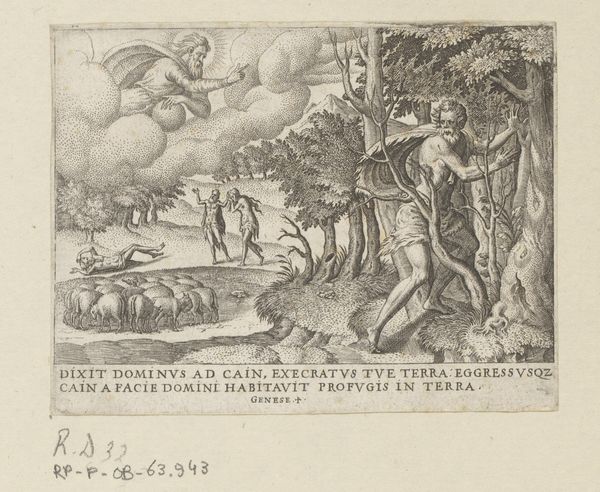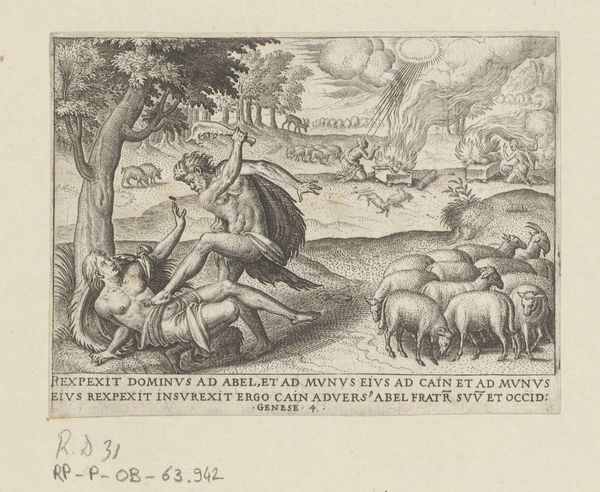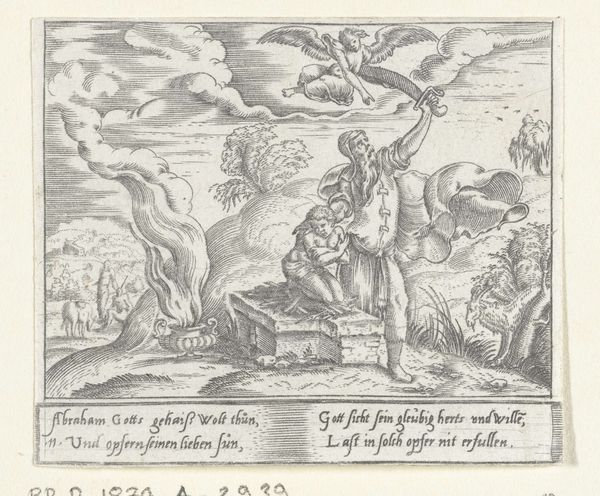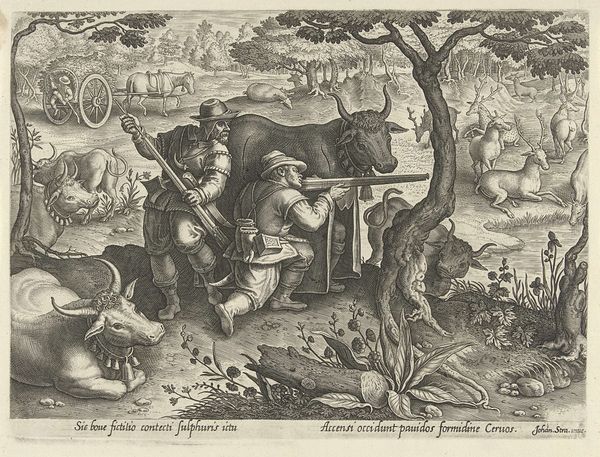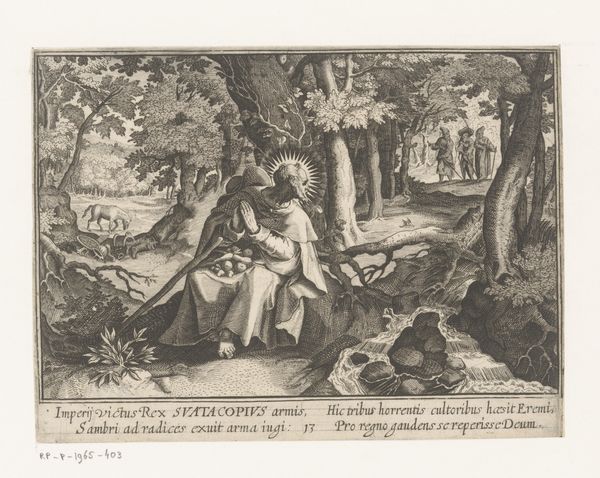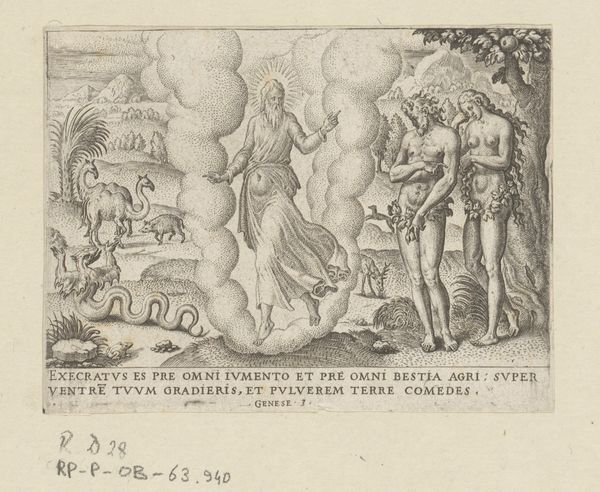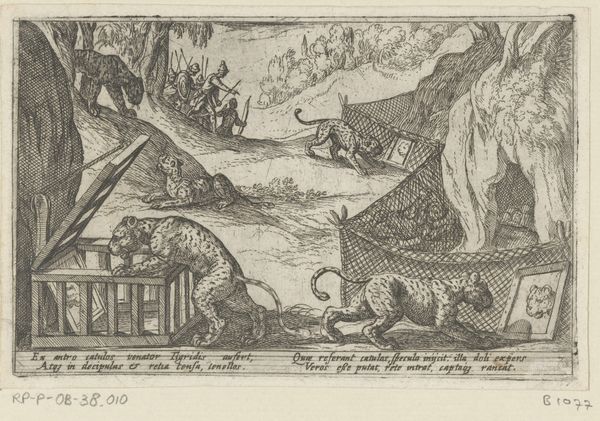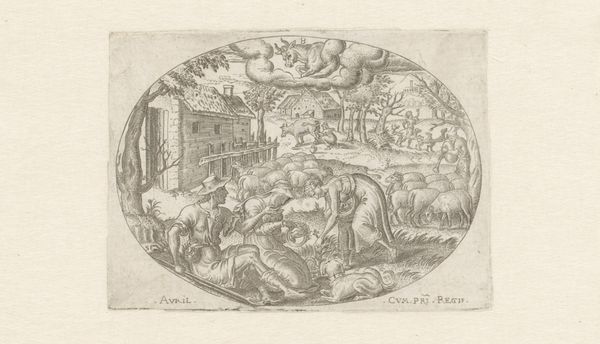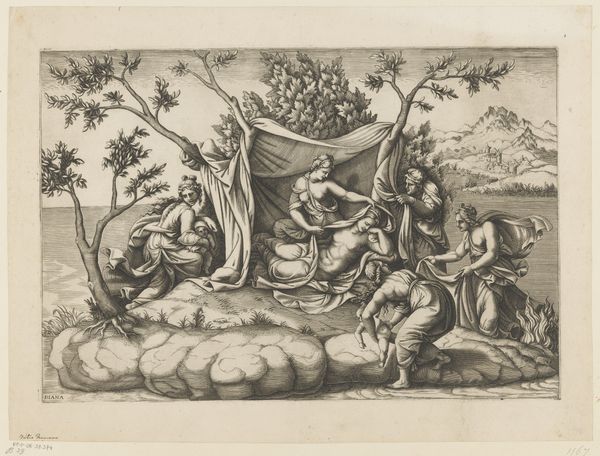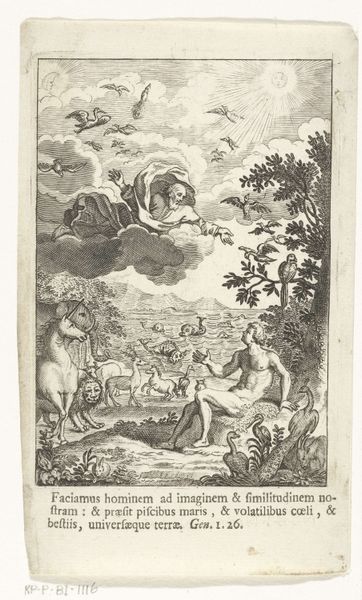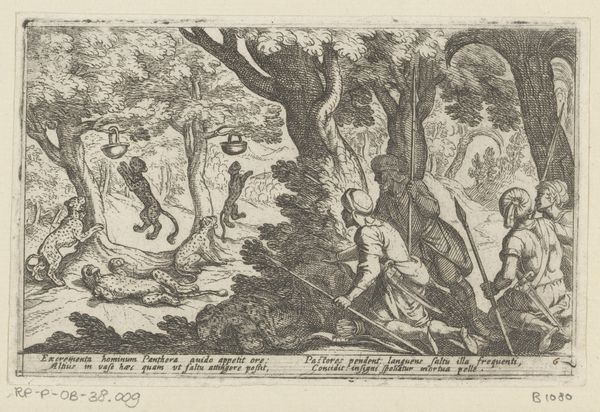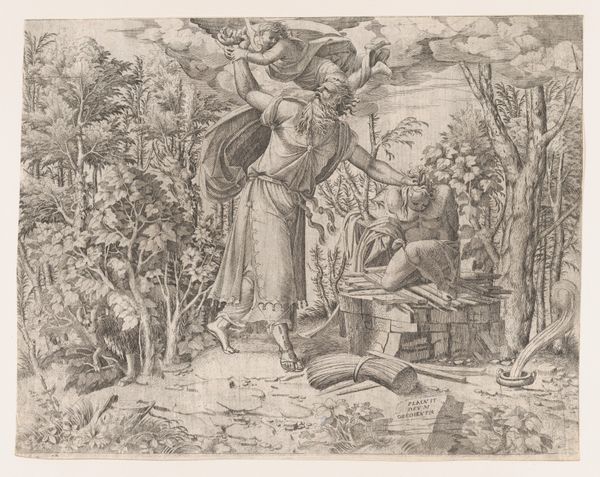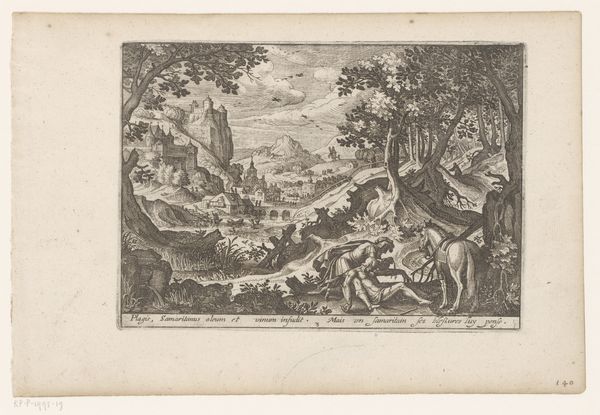
print, engraving
#
narrative-art
# print
#
old engraving style
#
landscape
#
figuration
#
11_renaissance
#
history-painting
#
engraving
Dimensions: height 78 mm, width 104 mm
Copyright: Rijks Museum: Open Domain
Editor: Here we have Etienne Delaune’s “Creation of Eve,” an engraving from after 1569 housed here at the Rijksmuseum. There is a striking dynamic in the composition; Adam reclines, almost limp, while Eve is actively being pulled up into existence by God. How do you interpret this work, especially its implications for gender dynamics? Curator: It’s interesting that you point out that active/passive dichotomy. We should examine the historical context of the work itself and broader narratives about gender during the Renaissance. Consider how interpretations of Genesis at the time reinforced patriarchal structures. Delaune, like many artists of his time, likely internalized and perpetuated these views. Editor: So, God’s forceful gesture… Curator: …can be viewed as symbolic of male dominance over the female form, presented as originating from and being subject to man. But it's crucial to ask: who was this imagery intended for, and what message was it meant to convey about the social order? Note, also, that there’s that Latin inscription beneath. What does it suggest? Editor: Ah, “The Lord God fashioned the rib which He had taken from man into a woman, and brought her to the man.” It firmly reinforces Eve as secondary, constructed from Adam's body. How subversive would this image have been perceived if Eve were depicted as proactively self-actualizing instead? Curator: Precisely! Consider then, how the passive Eve mirrors the political powerlessness afforded to most women of the era. These depictions weren't just about theology; they were actively shaping social roles. By questioning this, we can really excavate layers of meaning. Editor: Looking at it now, understanding the cultural baggage that came with this biblical scene truly does change everything. It encourages us to deconstruct those biases even today. Curator: Absolutely. Art like this demands we critically examine not just what is shown, but *why* it is shown, and whose interests that representation serves.
Comments
No comments
Be the first to comment and join the conversation on the ultimate creative platform.
